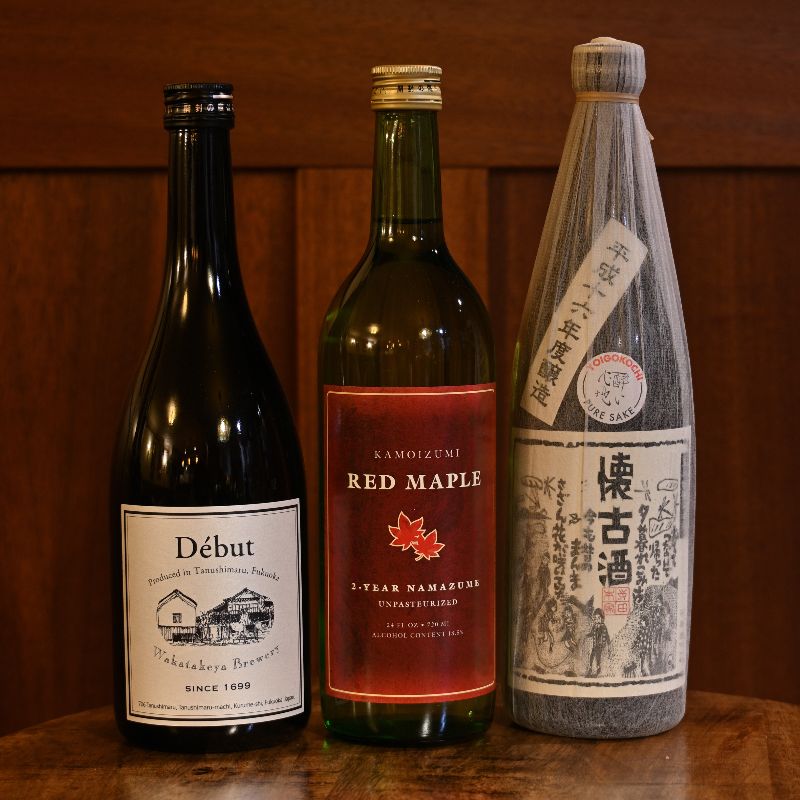
Can you age Namazake?
For the past 60 some years, the race has been to drink Sake as fast as possible after release from the brewery. Historically though Sake was aged to round out sharp edges and bring out new flavors. If you’ve been enjoying Hiyaoroshi which have been aged for just under a year, now is the time to try longer aged Nama. Do those in that order though, if you haven’t had this six pack, first that, or at the same time as the below.
What is Koshu? Technically it can be any Sake aged more than a year but there’s a movement to classify it as Sake aged over 3 years at the brewery. If you want to learn more, I highly recommend this excellent podcast. After you listen, you’ll want to try these!
Wakatakeya “Debut” Junmai Muroka Namazake
1 year aged. Pours with a slight yellow tinge. The nose is gentle showing caramel nuts and chalky cliffs. The palate is plush, expensive and beautiful. This fills every corner of your mouth with umami. Finish is long, dry and driving. It’s really fascinating how the first sip is sweet but the sake itself is not sweet at all. This really shows how aging can bring on a slow maillard reaction which develops sweet notes even though the sake is quite dry (+3 SMV). Serious complexity here. Even after not having a sip for 10 minutes, I can still taste roasted peanuts and apple skin acidity. Made using the first cataloged Sake yeast.
Kamoizumi “Red Maple” 2 year aged Ginjo Muroka Namazume Genshu
I don’t think I’ve ever described the color of Sake as electric, but there’s something almost neon about the slight yellow color. The nose shows roasted chestnuts and slate tiles. There’s a hint of dried pineapple, perhaps Pina colada. The palate is plush with even more pineapple, then cocoa, baking spices, then roast hazelnuts – Lebkuchen! Finally, the acidity arrives, and she ain’t shy. Wow, the finish really takes a fascinating turn. Aged 2 years at 41F.
2005 Terada Honke “Kaikoshu" Kimoto Junmai Muroka Namazake Genshu
Yes, you’ve read that correctly, 2005! Just released from the brewery. Pours a dark amber. The nose is shows complex warm chestnut honey on rice cakes. There’s fresh turmeric root initially on the ever evolving palate. As you chew to aerate you’ll unlock more caramel, nuts, cocoa and finally Bresaola. There’s elevated acidity here which pairs well with the slight bitterness, contrasting the previous Maillard notes. The finish is endless, introducing notes of Whoppers. Have a small glass every week for a year.
On the episode, Jim and Andy also mention Akishika, which I have a number of examples of.




